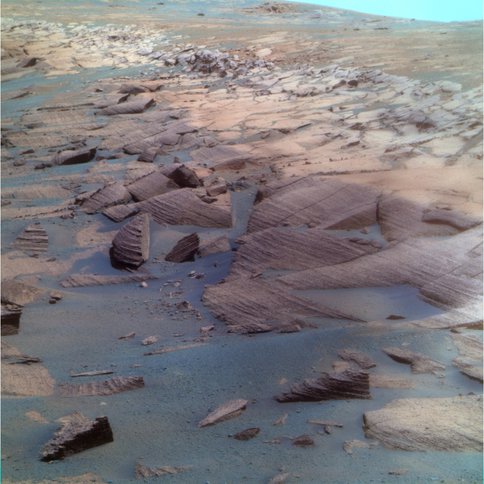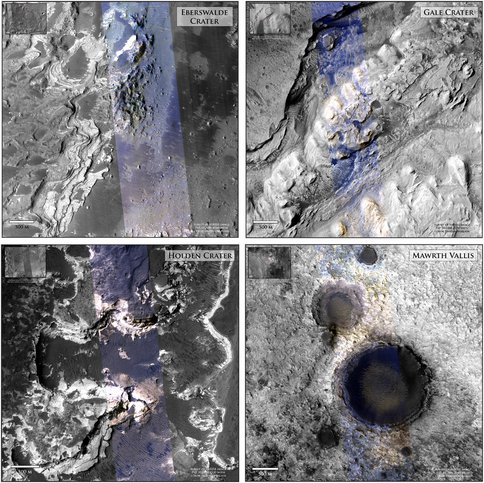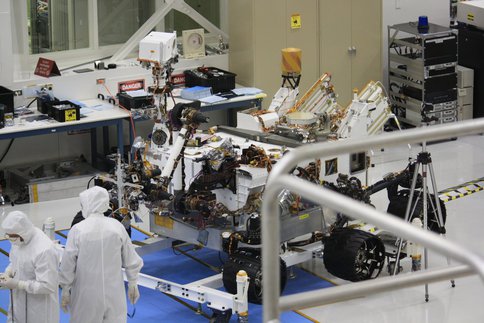2010 Annual Science Report
 Massachusetts Institute of Technology
Reporting | SEP 2009 – AUG 2010
Massachusetts Institute of Technology
Reporting | SEP 2009 – AUG 2010
Astrobiological Exploration of Mars
Project Summary
Astrobiological research informs many NASA missions and especially those concerned with exploring our near neighbor Mars. MIT team members have been making notable contributions to the Mars Exploration Rovers and Mars Science Laboratory missions.
Project Progress
Mars Exploration Rovers
In 2010, team members John Grotzinger and Andrew Knoll continued to work as members of the Mars MER science team. During this year, Opportunity completed its investigation of Burn formation outcrop along the inner margin of Victoria crater and headed south toward new, potentially clay-rich targets around Endeavour crater. Opportunity’s progress and scientific discoveries during this period are summarized in a forthcoming paper by Arvidson et al. (2010).
In related research, team member Andrew Knoll continued his longstanding collaboration with members of the Spanish center for Astrobiology. Specifically, Knoll and David Fernandez-Remolar combined field and laboratory analyses of the Rio Tinto ecosystem to gain a better understanding of how morphological and chemical signatures of life can be preserved in oxic, acidic settings like those suggested by rover studies of Meridiani planum, Mars (Fernandez-Remolar and Knoll, 2010).
Mars Science Laboratory
The Mars Science Laboratory (MSL) mission has an overall scientific goal of “exploring and quantitatively assessing a local region on Mars as a potential habitat for life, past or present” (http://msl-scicorner.jpl.nasa.gov/ScienceGoals/). There are four primary science objectives in order to meet the overall habitability assessment goal: assess the biological potential of at least one target environment by determining the nature and inventory of organic carbon compounds; characterize the geology of the landing region at all appropriate spatial scales by investigating the chemical, isotopic, and mineralogical composition of the surface and near-surface materials; investigate planetary processes of relevance to past habitability, including the role of water and carbon dioxide; and characterize the broad spectrum of surface radiation (MSL website).
A habitable environment is “one that has not only water, but also a source of carbon to make organism metabolism possible, and a source of energy to fuel that organism metabolism” (Grotzinger, 2009). MSL will search for organic carbon in rocks, soils, and the atmosphere, as well as the mineralogical diversity of the rock and soil chemistry. MSL is not a life-detection mission, but it will be able to detect complex organic molecules in rocks and soils, which could be of biological origin, or from carbonaceous meteorites (Grotzinger, 2009). MSL will also be able to evaluate the concentration and isotopic concentration of gases such as methane. Searching for habitable environments is difficult though because the degree to which organic carbon would be preserved on Mars is unknown.
At Caltech, MSL Project Scientist John Grotzinger, staff scientist Jennifer Griffes, and graduate student Katie Stack are all working on landing site analysis for MSL. They are all part of the Landing Site Working Group, which involves assessment of potential geologic targets for each site, mapping regions of interest, identifying and compiling hypotheses for the science targets, and developing plans that would test these hypotheses, including possible traverses. The assessment of these targets will be done using criteria based on diversity, context, habitability and preservation for each site. We have weekly meetings of this working group to discuss and present these topics. Facilitating landing site discussion and selection helps to bring into context important concepts of astrobiology including what is known about the capacity of life, as we know it, to exist in Martian environments. To determine habitable environments, we must infer processes from the past using chemical, physical, and geologic observations. MSL will go to a site with clear evidence for ancient aqueous processes, based on a suite of various orbital data.
The advisory panel headed by Roger Summons also completed its inquiry into the best prospects for organic preservation in Martian materials and wrote a review paper currently in revision at Astrobiology (Summons et al., 2010).
The sedimentary succession exposed within the rim of Victoria crater, Mars, is seen clearly in this image taken by the Pancam instrument on the MER rover Opportunity. Coordinated studies of physical stratigraphy and geochemistry provide insights into environmental conditions on Mars more than three billion years ago.
Publications
-
Arvidson, R. E., Ashley, J. W., Bell, J. F., Chojnacki, M., Cohen, J., Economou, T. E., … Wolff, M. J. (2011). Opportunity Mars Rover mission: Overview and selected results from Purgatory ripple to traverses to Endeavour crater. Journal of Geophysical Research, 116. doi:10.1029/2010je003746
- Ferdnandez-Remolar, D. & Knoll, A.H. (2010). Preservation of biological information under acidic conditions in the Rio Tinto extreme environment. 3rd International Palaeontological Congress. London.
-
PROJECT INVESTIGATORS:
-
PROJECT MEMBERS:
Nicholas Tosca
Postdoc
Jeniffer Griffes
Research Staff
Joannah Metz
Graduate Student
-
RELATED OBJECTIVES:
Objective 1.1
Formation and evolution of habitable planets.
Objective 2.1
Mars exploration.






